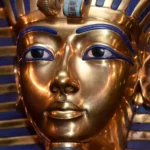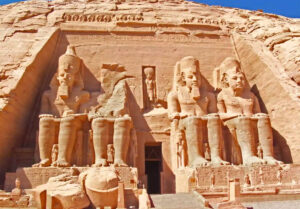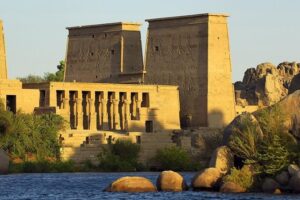Top 10 Egypt Tourist Attractions You Can’t Afford to Miss
Discovering Ancient Wonders and Vibrant Culture
Egypt, the land of pharaohs and a cradle of ancient secrets, greets visitors with its matchless historical complexes, fascinating culture, and breathtaking scenery. Beginning with the enigmatic world-renowned pyramids and finishing with the serene Nile River, this African gem is ready to leave an indelible mark on your memory. If you visit this magnificent country someday, don’t miss these top 10 Egypt tourist attractions. We created this list to be informative yet simple for all visitors to read.
1. Pyramids of Giza and the Sphinx: Symbolic Icons of Antiquity

No visit to Egypt is complete without being impressed by the Pyramids of Giza and enigmatic Sphinx. These giant man-made mountains, built as pharaoh tombs for kings Khufu (the Great Pyramid), Khafre, and Menkaure, have been impressing human imagination for centuries. The Great Pyramid, the largest of the three, is the only remaining Ancient Wonder of the World. Behold the sheer intelligence and toil that has gone into their creation, a testament to the greatness of the civilization of ancient Egypt. Watching over this giant necropolis is the Sphinx, lion’s body with the head of a man, another enigma contributing to the site. Visiting Giza is like moving backward in time and catching a vision of the splendor that was once the past.
2. Grand Egyptian Museum (GEM) / Egyptian Museum in Cairo: Treasure Trove of Antiquities

Although the long-awaited Grand Egyptian Museum (GEM), when eventually opened, will be the world’s largest archaeological museum with a Tutankhamun collection in its entirety among its more than 100,000 items, Egypt’s Cairo Museum (in Tahrir Square) remains an absolute must-do for now. It boasts an unparalleled treasure trove of ancient Egyptian antiquities. Standouts are the breathtaking gold funerary mask of Tutankhamun, his exquisite funerary objects, colossal pharaoh statues like Ramses II, and hundreds of smaller objects providing excellent insight into life, religion, and craftsmanship in ancient times. Be amazed at the craftsmanship and quantity of these objects.
3. East Bank of Luxor: Karnak and Luxor Temples – City of the Gods

Luxor city, or the so-called “world’s greatest open-air museum,” is filled with an incredible density of ancient wonders. On the Nile’s East Bank, two massive temple complexes stand as testaments to the piety of ancient Egyptians: Luxor Temple and Karnak Temple.
The Karnak Temple, a huge complex of sanctuaries, kiosks, pylons, and obelisks, is the world’s largest religious complex. Throughout centuries, a number of pharaohs constructed and contributed to the complex, giving us this marvelous piece of architecture. Stroll through its gigantic hypostyle halls, where giant pillars adorn exquisite hieroglyphs, and the past will envelop you.
A stone’s throw away is Luxor Temple, renowned for its imposing colonnades, colossal statues, and Avenue of Sphinxes that used to connect it with Karnak. This temple was one of the centers of the Opet Festival, a ceremony held each year to ensure the king’s divine right to the throne. It’s a fairy-tale visit to see the two temples at sunset when the ancient stones are imbued with golden light.
4. Luxor’s West Bank: Temple of Hatshepsut and Valley of the Kings – Royal Cemeteries and Mortuary Splendor

On the other side of the Nile, Luxor’s West Bank serves as a pharaonic and royal necropolis. Specifically, the Valley of the Kings is the burial site for many of Egypt’s New Kingdom pharaohs, including the iconic Tutankhamun. Here, tours of these rock-cut tombs allow you to view beautifully preserved, vibrant wall paintings and hieroglyphs that chronicle the pharaohs’ journey to immortality. Consequently, each tomb presents a unique history, offering fascinating insight into ancient Egyptian art and mythology.
Adjacent to this, the Mortuary Temple of Hatshepsut stands as a severe work of ancient Egyptian architecture, ascending in a succession of terraces from the desert floor. Dedicated to the powerful female pharaoh Hatshepsut, consequently, its unusual shape strikingly protrudes from the cliffs of Deir el-Bahari. Therefore, exploring this great temple allows you to experience its grandeur and delve into the life of one of Egypt’s greatest rulers.
5. Nile River Cruise: A Peaceful Ride Through Time

A cruise on the Nile River is quite possibly the most relaxing and engaging manner in which to view Egypt’s antiquities. While cruising down Egypt’s lifeline, you’ll glide past lush green fields contrasting with the harsh desert landscape, cruising along ancient temples and villages. Most cruises operate between Luxor and Aswan, allowing one to visit easily places like the Temple of Kom Ombo, which is dedicated to Sobek and Horus, and the Temple of Edfu, Egypt’s best-preserved temple. A Nile cruise is an introduction to Egypt’s history and culture, and every moment is a scenic revelation.
6. Abu Simbel Temples: Moved Wonders on Lake Nasser

Just after seeing a photo of this magnificent temple, you realize why it is on the list of the Top 10 Egypt Tourist Attractions. In southern Egypt, bordering Sudan, the monumental Abu Simbel Temples are a witness to both ancient Egyptian engineering and modern restoration. Pharaoh Ramses II ordered the construction of two gigantic rock-cut temples carved into the mountainside. He dedicated the Great Temple to himself, and the second temple to his favorite wife, Queen Nefertari. What makes Abu Simbel special is its relocation in the 1960s.
To save them from inundation by the expanding waters of Lake Nasser after the Aswan High Dam’s construction, UNESCO embarked on a monumental project. Specifically, they dismantled and reassembled the temples at a higher ground level. Indeed, to behold these massive structures is truly awesome. This is especially true during the twice-yearly “Sun Festival,” when sunlight penetrates to the innermost shrine.
7. Aswan: Southern Charm and Nubian Culture

Aswan, typically Egypt’s most relaxed city, is less frenetic than Luxor or Cairo. The Nile here flows tranquilly, with feluccas (centuries-old sailboats) and green islands breaking its surface.
Experience the vibrant texture of Egyptian life at Khan el-Khalili Bazaar in Islamic Cairo. This 14th-century medieval souk is an infinite labyrinth of alleys. Here, you’ll find shops selling all manner of spices, perfume, intricate metalwork, leather, and souvenirs. Indeed, the air fills with the smells of spices and shisha smoke. The din of haggling and chatter rises above the general cacophony. Consequently, it’s a great place to hone your bargaining skills. You can also find quirky bargains and rub shoulders with the bustling local life. Finally, don’t forget to drop into a traditional coffeehouse for a mint tea and some excellent people-watching.
9. Sharm El Sheikh & the Red Sea Coast: Underwater Paradise

If relaxation and adventure are part of your plan, Egypt’s Red Sea coast is a stunning contrast to its ancient attractions. Sharm El Sheikh, a Sinai Peninsula resort town, is the gateway to some of the world’s best diving and snorkeling spots. The Red Sea provides waters with brilliant blue water and thick coral reefs and magnificent marine life, an underwater heaven. Apart from diving, there’s boat cruising, water sports or simply lounging on the pristine white beaches. Other Red Sea resort towns, such as Hurghada and Dahab, have equally to offer, each with its own character.
10. Siwa Oasis: Desert Secret Forgotten

Without a doubt, Siwa is among the top 10 Egypt tourist attractions you won’t want to miss! For a truly off-the-beaten-track experience, head to the enigmatic Siwa Oasis in the Western Desert. This remote oasis, hidden among rolling dunes of endless sands, provides unique insight into an isolated Berber culture. Moreover, it offers a wonderfully relaxed rhythm of life.
Here, you can visit the ancient mud-brick ruins of the Shali Fortress. Additionally, you can bathe in natural hot and cold springs. Don’t forget to see the Temple of the Oracle of Amun, where Alexander the Great once came to seek prophecy. Beyond its historical sites, Siwa also boasts renowned date palms and olive groves. Ultimately, the peaceful majesty of its landscape offers a welcome relief from city life.
Egypt truly invites endless discovery; every corner you turn unveils a new aspect of history, culture, and nature. This book merely begins an unforgettable adventure, promising to amaze and inspire you. So pack your bags, prepare to be amazed, and start your Egyptian quest!
Before you go, check Egypt’s weather!












